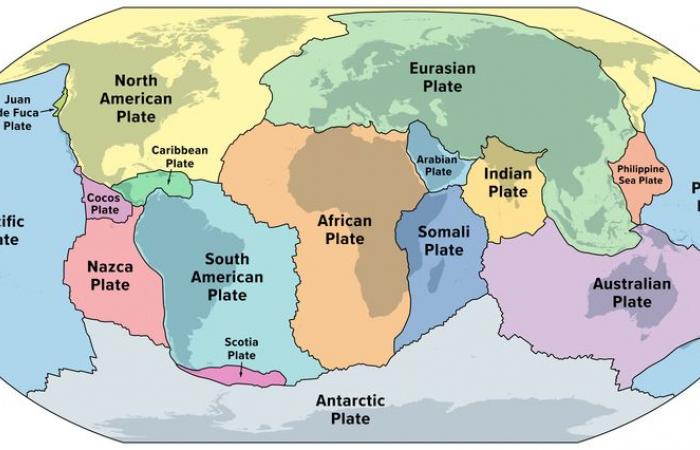Did you think the Earth was a block of rock frozen in time? Think again. Our planet is actually a veritable kaleidoscope of constantly evolving tectonic plates. Researchers have just revealed a breathtaking video which retraces 1.8 billion years of these continental movements in barely a minute.
A journey through geological time
Thanks to new geophysical data and sophisticated computer models, scientists have reconstructed the history of our planet with unprecedented precision. The video begins in the twenty-first century, with the continents we know today, then travels back in time to ago 1.8 billion years.
Over millions of years, we witness geological spectacles: the formation and dislocation of supercontinents, the opening and closing of oceans, the birth of mountain ranges… Pangea, the famous supercontinent which brought together all the land that emerged about 200 million years ago appears and disappears before our eyes.
The boring billion: a period of great activity
Contrary to what was previously thought, the period included between 1.8 and 0.8 billion of years, often referred to as boring billion due to an apparent relative tectonic stability, turns out to be much more dynamic than previously believed. New geological data and more precise simulation models indeed reveal a intense tectonic activity during this period. Many plate movements took place, such as subductions and continental collisions which gave rise to new mountain ranges.
These discoveries thus call into question previous models and underline the importance of reassessing our knowledge of the evolution of the Earth. This period, far from being a moment of calm, now appears to be a crucial phase in the history of our planet, marked by major geological events which have shaped the continents and oceans.
And the future? It still has many surprises in store. Scientists predict that the continents will continue to move and transform. In a few million years, Africa could split in two, giving birth to a new ocean. In the longer term, all continents could come together again to form a new supercontinentperhaps called Amasia or Aurica.
Why is this research important?
This information is important for several reasons. First, by studying the movements of tectonic plates over time, scientists can identify areas most at risk of earthquakes, volcanic eruptions and landslides. This knowledge makes it possible to set up early warning systems and build safer infrastructure, thereby reducing risks for populations.
Rocks and fossils are also archives that tell us about past environments. By deciphering these archives, scientists can reconstruct the history of life on Earth, understand the mechanisms behind mass extinctions and study past climate variations. This information is therefore essential for understanding the impacts of human activities on the current climate and anticipating future changes.
Finally, understanding the geological history of our planet allows us to better understand the processes that shape our environment. By knowing the natural cycles and factors that influence climate, we are better equipped to face current and future environmental challenges. The study of geology is therefore an investment for the future that allows us to make informed decisions to protect our planet and future generations.
A fascinating vision of the connections between tectonics and biodiversity
The movements of tectonic plates not only shape land and sea landscapes, they also play a key role in the evolution of biodiversity. By modifying the configuration of continents and oceans, these movements influence regional climates, ocean currents, and therefore habitats. For example, continental drift isolated certain species, favoring their evolution into new forms of life, while the creation of mountain ranges allowed the emergence of unique ecological niches. This interconnection between geology and biology illustrates how the history of our planet is intimately linked to that of life.
The study is published in the journal Geoscience Frontiers.






